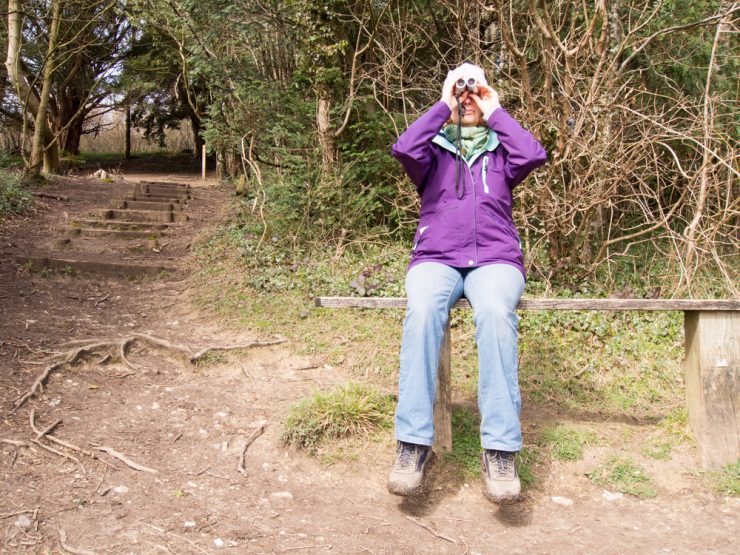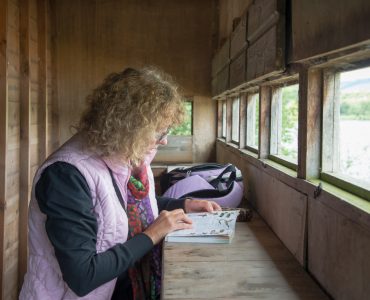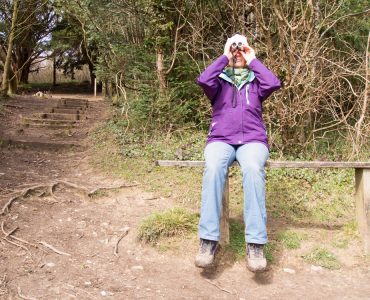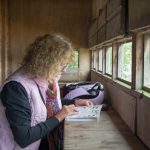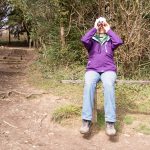Charles II was the one who brought the red legged partridge to Britain in the early 1600’s. They originated from France where they had been used as target practise birds for gun shooting. Over the years these birds have grown in number and have become resident birds, found in larger numbers than the British native grey partridges as well. The male and female birds are quite similar in appearance, both highly attractive birds. The upper body portion is a greyish brown shade, and the breast area is a bluish grey shade. The head of these birds are the boldest feature, with e striking white striped design on top of the head above the eyes. The chin is white in colour and throat has a black necklace design. The red legged partridge’s legs are, or course, red in colour, as are the eyes and the ring around the eyes. The flanks of the bird are also very bold, marked with bars of black and chestnut alternating colours.
The juvenile young ones of the red legged partridges are very much like the juveniles of the common grey partridges. The scientific name of these birds is Alectoris Rufa, and they can grow to full lengths of 32 to 35 cm, weighing around 500 to 550 grams. The large bird has a 45 to 50 cm wing span. They are found in the country all year round, and currently have a green status in Britain, since they have become sedentary birds in their adopted land.
The voice of the red legged partridge is very loud, making rhythmic calls, sort of like a chuffing sound – ‘chuck chukka chuff’. The sound is produced mainly by the male bird, the female being the more subservient among the two. Since these birds are wholly sedentary, their movements are restricted to only a few km away from their hatching grounds. The red legged partridges don’t generally live in gardens and parks, preferring to make their homes in the wooded areas in the local forests. These birds have been blamed on a few occasions for the reduction in number of the grey partridges, which could not be proven till date.
The grey partridge and red legged partridges have very similar feeding habits as well. They live mainly on leaves, seeds, roots, grasses, other cereals, and sometimes even weeds. On rare occasions they also feed on small insects. The breeding season for the red legged partridge starts in the month of April, with the female carrying about 10 to 16 eggs and only 1 clutch. Nests are found among bushes, in farmland and hedgerows. They are lined with material from plants. One curious feature about these birds is that the female tends to lay eggs in two different nests, after which one nest is taken care of by the male while the female looks after the other one. The incubation period lasts about 23 to 25 days, with both parents assisting equally in raising the juvenile. Since the wings of the young bird grow very fast, they learn to fly early, and once the next breeding season arrives, the young ones move of to have their independent lives.


